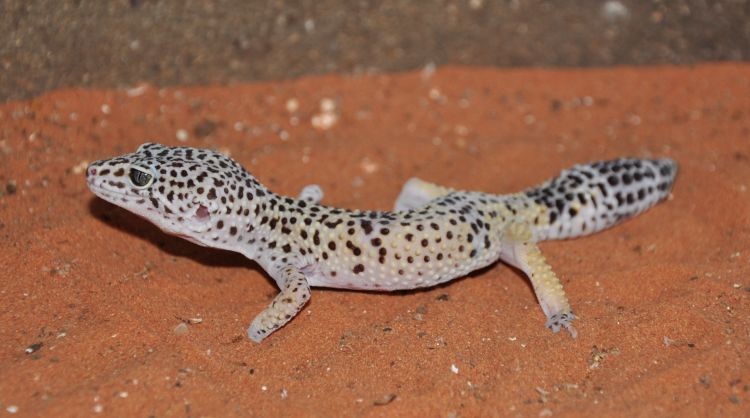Leopard gecko
(Eublepharis angramainyu)

Description
The leopard gecko or common leopard gecko (Eublepharis macularius) is a ground-dwelling lizard native to the rocky dry grassland and desert regions of Afghanistan, Iran, Pakistan, India, and Nepal. The leopard gecko has become a popular pet, and due to extensive captive breeding it is sometimes referred to as the first domesticated species of lizard. Leopard geckos were first described as a species by zoologist Edward Blyth in 1854 as Eublepharis macularius. The generic name Eublepharis is a combination of the Greek words eu (good) and blepharos (eyelid), as having eyelids is the primary characteristic that distinguishes members of this subfamily from other geckos, along with a lack of lamellae. The specific name macularius derives from the Latin word macula meaning "spot" or "blemish", referring to the animal's natural spotted markings. There are five subspecies of E. macularius: Eublepharis macularius afghanicus Eublepharis macularius fasciolatus Eublepharis macularius macularius Eublepharis macularius montanus Eublepharis macularius smithi The native habitat of the leopard gecko includes the rocky, dry grassland, and desert regions of south-Asian Afghanistan, Pakistan, north-west India, western Nepal, and some parts of Iran. Leopard geckos inhabit arid and semi-arid areas with sparse vegetation and clay or sandy soils, as well as rocky habitat where crevices can be used as shelter. They reportedly avoid areas where the primary substrate is sand. Winter temperatures within the range of the leopard gecko can be quite low, below 10 °C (50 °F), forcing the animals underground into semi-hibernation, called brumation, living on fat reserves.
Taxonomic tree:







